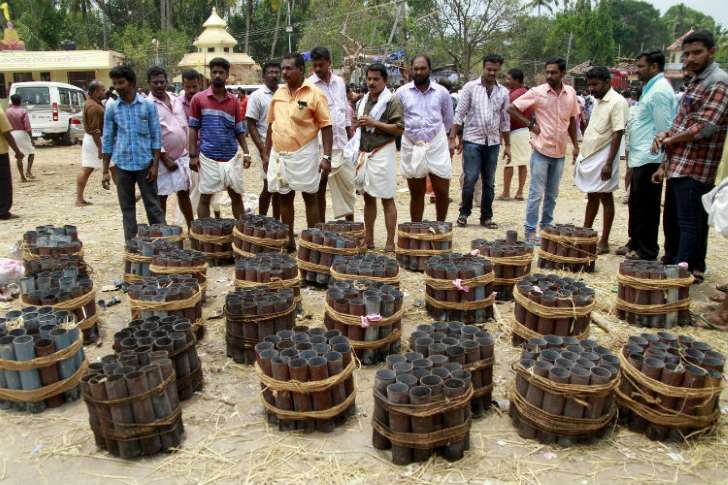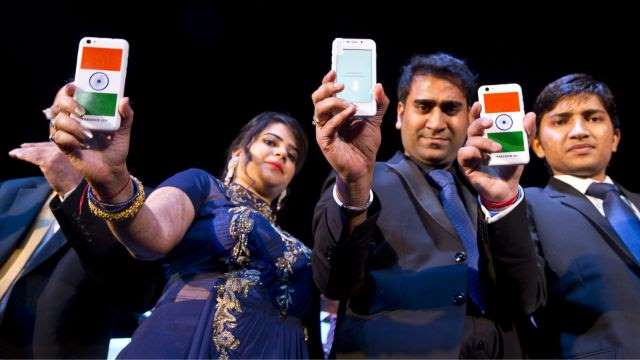April 11, 2016
New Delhi: Banned chemical pottassium chlorate was used in making the firecrackers which caused the tragedy at Kerala's Puttingal Devi temple, police sources said Monday.

April 11, 2016
New Delhi: Banned chemical pottassium chlorate was used in making the firecrackers which caused the tragedy at Kerala's Puttingal Devi temple, police sources said Monday.

Kerala Police said traces of the highly explosive chemical was found in the fireworks used at the temple. Pottassium chlorate, banned in the country since 1992, is used by some extremist organisations in making crude bombs.
The chemical is sometimes used illegally to make firecrackers more noisy and colourful at only one-third the cost of legal materials. After things went wrong, the deadly mix killed 108 people and injured more than 350. Buildings nearly 2 kms away were damaged. Ceilings of houses nearby made of mud tiles were blown away, and in some cases walls of homes were split apart.
The police in their raids have recovered explosives at godowns of the two contractors involved in the show at the temple in Paravoor, 50 kms from capital Thiruvananthapuram. Three explosives laden cars were also found at a nearby temple, forcing the authorities to evacuate residents from the area.
A ground report by CNN-IBN correspondents showed that temple authorities had disregarded every clause in the rulebook as they went ahead with the pyrotechnics.
- The Supreme Court directives and the provisions of the Explosives Rules 2008 bans fireworks between 10 pm and 6 am. But in Paravur, it started after midnight and went on till the accident at 3:10 am
- The rules say display of fireworks should be held at least 100 metres away from people and residential places, at Paravoor it was just 30 metres away from the spectators.
- The rules also allow the use of only 15 kilos of explosives, but hundreds of times that limit were used in Paravoor , as at other temple festivals
- And finally, the contents of the crackers must be put on the packing, but in Paravoor as in other parts of Kerala, this rule is rarely followed.
The metal containers found at the site gave an indication of the sale of fireworks. Almost 4 feet high and 10 inches in diametre, each can accommodate 15 to 20 powerful crackers, locally called the amittu or an even the more powerful version called the gundu.10 amitts bursting together can create 10 times the sound and fury, and if things don't go as planned, 100 times the damage.
This year, Kollam district collector Shainamol and the additional district magistrate A Shanavas denied permission after a probe they conducted on a complaint by a senior citizen who lives near the temple. The decision by the officials, both from the minority community, were questioned in the politically surcharged atmosphere in a state which goes to polls in a month from now. But as Shainamol and Shanavas stuck to their guns, the temple authorities, with the support of political leaders, circumvented the system.
After the Paravur tragedy, calls for restrictions on firework displays at temple festivals are getting louder. The Kerala High court is treating a letter written by its judge seeking curbs on crackers as a PIL and will take up the matter on Tuesday.







































































































